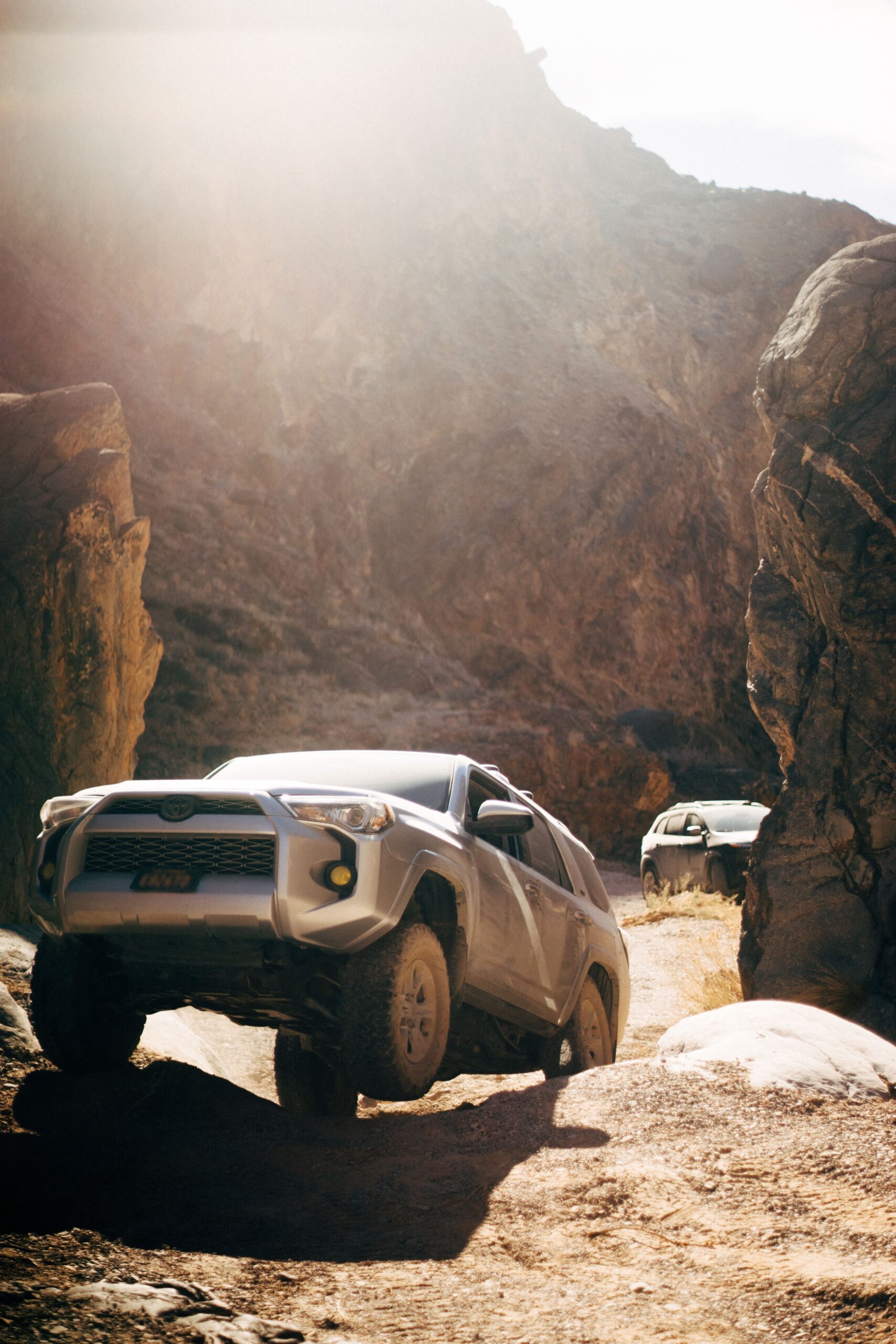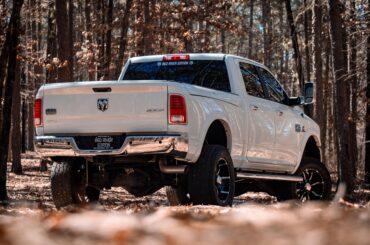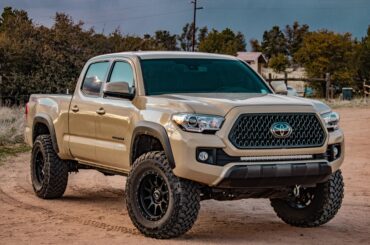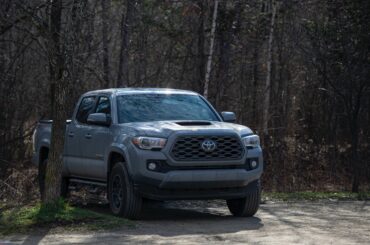Four-wheel drive (4WD) systems are a crucial feature in many off-road and all-terrain vehicles, including the versatile Toyota Tacoma. Whether you’re navigating challenging off-road trails, facing slippery road conditions, or venturing into the great outdoors, knowing when and how to use 4H and 4L in your Toyota Tacoma is of paramount importance. These two modes, “4H” and “4L,” offer distinct capabilities that can significantly enhance your driving experience and vehicle’s performance.
In this article, we’ll delve into the world of 4WD, exploring the significance of comprehending these modes and providing valuable guidance on when and when to use 4h and 4l Tacoma. Understanding these features can make a world of difference in your Tacoma’s performance, ensuring that you have the traction, stability, and power needed to conquer various terrains and conditions. So, let’s embark on this journey to unlock the full potential of your Toyota Tacoma’s 4WD system.
Contents
Understanding 4H and 4L
Before we dive into when and how to use these four-wheel-drive modes, it’s crucial to have a clear understanding of what “4H” and “4L” represent and how they function within your Toyota Tacoma’s 4WD system.
Defining 4H and 4L:
- 4H, or “4 High,” stands for “four-wheel drive high range.” In this mode, the power is distributed to all four wheels, providing better traction and stability than the standard two-wheel drive (2WD). It’s designed for various driving conditions, especially when encountering slippery or loose surfaces.
- 4L, or “4 Low,” signifies “four-wheel drive low range.” When you engage 4L, your Tacoma gets an extra dose of power and torque, which is essential for overcoming extreme off-road challenges. 4L is meant for slower speeds, and it’s specifically tailored for demanding terrains, such as steep inclines, rocky trails, deep mud, and sand.
The Basic Principles of Toyota Tacoma’s 4WD System:
The 4WD system in your Toyota Tacoma operates on a simple yet effective principle. It’s designed to send power to all four wheels simultaneously, ensuring improved traction and control. This is particularly advantageous when two-wheel drive would lead to wheel slippage and a loss of control.
In “4H” mode, power is distributed evenly to the front and rear wheels, allowing for better stability and grip, especially on slippery surfaces like wet roads, snow, or gravel. You can use “4H” at higher speeds, making it suitable for highway driving when road conditions are less than ideal.
On the other hand, “4L” takes the 4WD system to a whole new level. It provides substantial power and torque to the wheels at lower speeds. This additional power is vital for conquering challenging off-road terrains, including steep hills, rocky paths, deep mud, and sand. While “4L” excels in extreme conditions, it’s not intended for high-speed driving and should only be used at slower speeds.
Understanding these basic principles of 4H and 4L in your Toyota Tacoma’s 4WD system lays the foundation for knowing when to engage these modes effectively, ensuring you can navigate diverse terrains and conditions with confidence.
When to Use 4H (4 High)
Now that we’ve defined 4H and grasped the fundamental principles of the Toyota Tacoma’s 4WD system, let’s explore the scenarios in which it’s appropriate to engage “4H,” or “4 High,” and the benefits it offers:
1. Suitable Scenarios for 4H:
- Wet Roads: When the rain pours and roads become slick with moisture, 4H can be your ally. Engaging 4H in these conditions improves traction, reducing the chances of wheel spin and loss of control.
- Gravel Paths: Gravel roads can be unpredictable, especially in rural or off-road settings. By switching to 4H, your Tacoma gains better stability and grip on loose surfaces, enhancing your control.
- Snow-Covered Terrain: Snow and ice make for treacherous road conditions, but 4H excels here. It ensures that power is distributed evenly to all four wheels, reducing the risk of slipping and sliding.
- Sandy Beaches or Desert Trails: Soft sand presents a unique vehicle challenge. Engaging 4H helps your Tacoma maintain traction on sandy terrain, preventing it from getting stuck.
2. Improved Traction and Stability:
The primary advantage of using 4H is its ability to enhance traction and stability. By sending power to both the front and rear wheels, it minimizes wheel spin, providing better control and reducing the likelihood of your Tacoma getting stuck. This improved stability can be a game-changer when navigating challenging terrains or adverse weather conditions.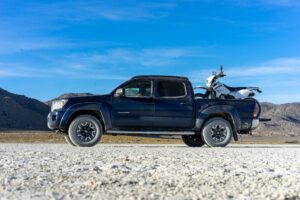
3. Ideal for Specific Situations:
One notable feature of 4H is its compatibility with higher speeds. This makes it well-suited for situations where you must maintain speed and control. When driving on highways with slippery surfaces or long stretches of gravel, 4H ensures you can maintain a reasonable pace without sacrificing safety.
When to Use 4L (4 Low)
Now that we’ve covered the benefits of 4H, let’s explore “4L,” or “4 Low,” and the situations where it becomes your indispensable companion:
1. When and Why to Use 4L:
Extreme Off-Road Conditions: 4L is the mode you turn to when facing some of the most challenging off-road conditions. It’s not for everyday driving but for those instances where you need maximum power and control to tackle daunting terrains.
2. Increased Power and Torque:
In 4L, your Toyota Tacoma receives an impressive surge of power and torque, making it ideal for crawling at lower speeds. This extra muscle is essential when you encounter obstacles or terrain that demands more force to navigate, such as steep inclines, rocky paths, deep mud, or soft sand.
3. Extreme Off-Road Conditions Where 4L Is Necessary:
- Steep Inclines: When ascending steep hills or mountains, 4L provides the power to conquer these gradients without strain, minimizing the risk of sliding backward.
- Rocky Terrain: On rocky trails, where wheels may easily lose traction, 4L keeps the wheels moving steadily, ensuring you maintain control.
- Deep Mud: Deep mud can be an unforgiving terrain, but 4L’s enhanced power helps your Tacoma slog through it with reduced wheel spin.
- Soft Sand: Whether you’re exploring sandy dunes or coastal shores, 4L prevents your vehicle from getting bogged down in the soft sand by providing the torque needed for consistent forward movement.
4. Not Meant for High-Speed Driving:
It’s crucial to emphasize that 4L is not intended for high-speed driving. This mode prioritizes power and control over velocity. Attempting to use 4L at high speeds can place undue stress on the vehicle and will likely result in mechanical strain or damage. It’s reserved for slow, deliberate, and precise maneuvering in severe off-road conditions.
When to use 4h and 4l Tacoma
In conclusion, knowing when and how to use 4H and 4L in your Toyota Tacoma is essential for safe and effective driving. Follow the manufacturer’s recommendations diligently for a secure experience.
Additionally, we encourage drivers to understand their vehicle’s capabilities fully. This knowledge empowers you to make informed decisions in diverse driving conditions, from challenging off-road terrains to slippery roads, ensuring you and your Tacoma are always prepared for the journey ahead.
Airbag Control Unit Settlement Scam
Toyota Tacoma a good Option with a Family?

